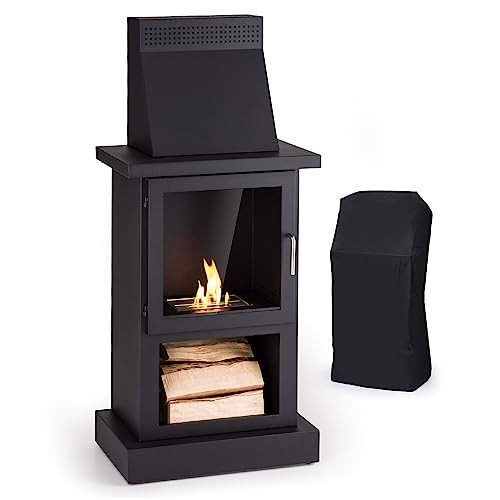
fireplaces3486
About fireplaces3486
You’ll Never Guess This Fireplaces’s Tricks

Fireplaces in the UK: A Comprehensive Guide
Fireplaces have long been an integral part of British homes, using both visual appeal and functional heat. As the weather condition turns cold, the appeal of a cozy fire beckons, changing any living area into a sanctuary. In this post, we will explore the different types of fireplaces offered in the UK, considerations for setup, upkeep tips, and responses to often asked questions about fireplaces.
Kinds of Fireplaces
When selecting a fireplace for a UK home, a number of alternatives are offered, each with unique functions and benefits. The following table summarizes the primary types of fireplaces popular in the UK:
| Fireplace Type | Description | Pros | Cons |
|---|---|---|---|
| Open Hearth | Traditional fireplaces that burn wood or coal, supplying a rustic feel. | Authentic atmosphere; excellent heat distribution | Less energy-efficient; needs chimney maintenance |
| Gas Fireplaces | Usage gas or propane; can be direct vent or ventless. | Instant heat; easy to run; cleaner burning | Initial setup cost; may require gas line |
| Electric Fireplaces | Imitate a flame using LED lights and supply heat through electricity. | Safe; simple to install; no flue needed | Less genuine; greater operating expense |
| Wood-burning Stoves | Closed-system fireplaces that burn logs, offering high performance. | High heat output; eco-friendly when utilizing sustainable wood | Limited aesthetic compared to open hearth |
| Bioethanol Fireplaces | Environment-friendly choice that burns bioethanol, developing genuine flames. | No chimney needed; flexible design options | Can be costly to operate; restricted heat output |
Advantages and disadvantages of Each Type
-
Open Hearth
- Pros:
- Provides character to any living area.
- Effective heat circulation due to open flames.
- Cons:
- Less energy-efficient and more smoke than modern alternatives.
- Requires regular cleansing and maintenance of the chimney.
- Pros:
-
Gas Fireplaces
- Pros:
- Easy to manage and run with the flick of a switch.
- Cleaner alternative with less soot buildup.
- Cons:
- Requires a gas supply and setup expenses can be high.
- May not provide the same ambiance as a traditional fire.
- Pros:
-
Electric Fireplaces
- Pros:
- Simple setup without any chimney or flue required.
- Can be found in different styles, looking like traditional alternatives.
- Cons:
- Lacks the realism of genuine flames and can become costly with constant use.
- Pros:
-
Wood-burning Stoves
- Pros:
- Highly efficient and produces substantial warmth.
- Sustainable resource when utilizing responsibly sourced wood.
- Cons:
- Requires additional area for log storage and routine upkeep.
- Pros:
-
Bioethanol Fireplaces
- Pros:
- Flexible placement due to no requirement for traditional venting.
- Clean-burning and minimal impact on indoor air quality.
- Cons:
- Can be less cost-effective for continuous usage compared to gas or wood.
- Heat output is less efficient for bigger spaces.
- Pros:
Installation Considerations
When installing a fireplace in a UK home, a number of factors need to be taken into consideration:
- Building Regulations: Ensure compliance with local structure codes and safety regulations.
- Chimney and Flue: Determine the requirement for a chimney or flue system based on the type of fireplace selected.
- Ventilation: Proper ventilation is important for security, specifically with gas, wood, and bioethanol options.
- Area: Consider the very best location for the fireplace to optimize heat circulation and visual appeal.
- Professional Help: Engaging an expert installer can guarantee a safe and accurate setup tailored to the particular type of fireplace.
Upkeep Tips
Routine upkeep of a fireplace is vital for both security and efficiency. Follow these standards to keep your fireplace in peak condition:
- Chimney Sweeping: Have your chimney expertly swept at least once a year to prevent obstructions and lower fire risk.
- Examine for Damage: Regularly look for leakages, fractures, or damage, particularly in gas and wood-burning fireplaces.
- Clean the Surroundings: Ensure the location around the fireplace is devoid of dust and combustible materials.
- Examine Carbon Monoxide Detectors: Test detectors frequently, particularly in homes with gas-burning home appliances.
- Store Wood Properly: If utilizing a wood-burning stove, shop wood in a dry area to reduce moisture content.
Regularly Asked Questions
What is the best type of fireplace for a small space?
For small areas, electric Fireplaces (Boomservicestaffing.Com) or bioethanol models are typically advised due to their smaller size, security features, and aesthetics.
Are electric fireplaces more affordable to run than gas?
Electric fireplaces generally have a lower in advance expense, but depending on electricity rates, they can be more costly to run long term compared to gas.
Do wood-burning stoves require a lot of maintenance?
While they do require some upkeep, such as cleansing and routine chimney sweeper, many homeowners discover that modern wood-burning stoves are effective and fairly low maintenance compared to traditional open hearths.
Can I set up a gas fireplace myself?
While some homeowners may try DIY installation, it is highly recommended to work with a professional for gas fireplace installations due to safety issues and regulatory compliance.

How can I take full advantage of the heat output of my fireplace?
To make the most of heat output from any fireplace, think about the following:
- Keep windows and doors closed throughout usage.
- Usage heat-efficient logs or fuels.
- Guarantee correct airflow around the fire.
- Utilize fans or blowers that can distribute warm air throughout the space.
Fireplaces stay a cherished aspect within UK homes, providing heat, charm, and an inviting atmosphere. Offered the variety of choices and their unique functions, property owners can pick the perfect fireplace to complement their living space while making sure security and efficiency. With routine maintenance and a clear understanding of the setup requirements, any person can take pleasure in the beauty and convenience of a fireplace for years to come.
No listing found.
